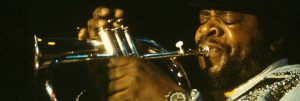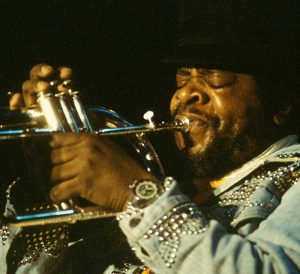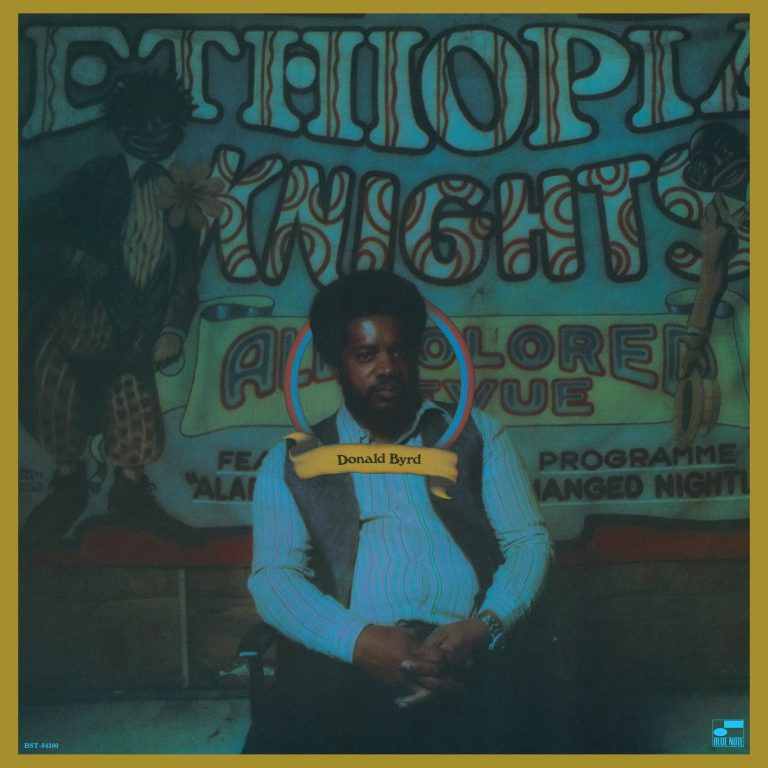Throughout the 1960s, Donald Byrd was already considered one of the finest hard bop trumpeters of his generation, rising to recognition as part of the Jazz Messengers, and playing with Max Roach, John Coltrane and Sonny Rollins. However by 1970, jazz was evolving in many directions and Byrd, who had already experimented with freer forms, was looking for a new musical foil for his ideas.
On his 1970 album “Electric Byrd”, there is indeed plenty of echoed-out amplified sound. Duke Pearson also returns to the electric piano he’d fallen in love with on Byrd’s previous album “Fancy Free”, but there’s more to the album than just electronics.
Composer and multi-instrumentalist Hermeto Pascoal and master percussionist Airto brought Brazilian rhythms and modes to the album, which are particularly felt on the drifty, weightless intro to Airto’s composition “Xibaba”. It’s an example of Byrd stretching out the song form while heightening its danceability, while the delays on his trumpet create a certain dancefloor reverie, a feeling of being lost in the rhythm, a dancing dream. While commentators at the time made comparisons to Miles Davis’ “In A Silent Way”, those were rather surface similarities, and the Brazilian elements, psychedelic feeling and associated freedom are wholly “Xibaba”.

The core rhythm section of this group also teamed up for the sessions that would eventually become Byrd’s “Kofi” album. “Kofi” is something of a lost gem, kept in the Blue Note vaults until 1995 for reasons unknown. It’s spliced together from two different recording sessions from 1969 and 1970, and in many ways it straddles the changing of the jazz mainstream, as it moved from hard bop to afro-cuban and latin jazz to the more rock-tinged fusion that Davis’ “Bitches Brew” was forging at the same time.
“We were already experimenting in so-called fusion before anyone else,” Byrd says in the liner notes.
Airto is joined on “Kofi” by fellow countryman and percussionist Dom Um Romao, and while the fusion elements are strong, Byrd still keeps an eye on the dancefloor. “Fufu” for example sees Ron Carter and Bob Cranshaw team up for a propulsive bass figure that gives Byrd, keysman Duke Pearson, and woodwind player Lew Tabakin plenty of scope to solo. It’s another example of the rhythmic yet spaced-out atmospherics that characterized this fusion era of Byrd’s, which leant heavily on vibe without losing sight of the groove. Byrd sounds as lyrical as ever, and it’s fascinating to hear him navigate these more spacey arrangements.

The release to the follow-up to “Kofi” was not delayed however. “Ethiopian Knights” dives deeper into stretched-out song forms, and is considered by many as the end of Byrd’s transition from hard bop master towards the jazz-funk icon he was soon to become, when he worked with the Mizell Brothers on his run of iconic mid-1970s albums like “Street Lady”, “Stepping Into Tomorrow” and “Spaces and Places”.
For the “Ethiopian Knights” sessions, Byrd traveled to the West Coast, hooking up with members of the Jazz Crusaders, as well as vibesman Bobby Hutcherson and sax player Harold Land. It’s rumored an uncredited appearance from producer Fonce Mizell was also part of these sessions. But whether credited or not, it’s clear “Ethiopian Knights” was the beginning of the shape of jazz-funk that was to come.
With just three songs at 37 minutes, “Ethiopian Knights” feels more like a statement of intent than an album. The title track is a 15 minute trip along an uptempo breakbeat that has the DNA of hip-hop spliced through it, while the last track “The Little Rasti” slows the tempo slightly for a hypnotic delay-soaked funk workout that has more in common with Parliament-Funkadelic and James Brown than “Bitches Brew”.
While it’s true that Byrd wanted to reach a wider audience, it wasn’t down to commercial interests. Byrd was more interested in spreading the music and history of jazz as far as possible. His pioneering work in jazz education speaks for itself, and this connection to young musicians was another factor in the shaping of his jazz-funk sound.
Whether you’re a fan of Byrd’s hard bop albums, his rare groove era, or the many experiments in between, Donald Byrd will always be remembered as one of the best to ever do it, a legend of the trumpet and one of jazz’s greatest ambassadors.

Max Cole is a Düsseldorf-based writer and music enthusiast who has written for record labels and magazines such as Straight No Chaser, Kindred Spirits, Rush Hour, South of North, International Feel and the Red Bull Music Academy.
Header image: Wayne Shorter. Photo: Michael Putland via Getty.



